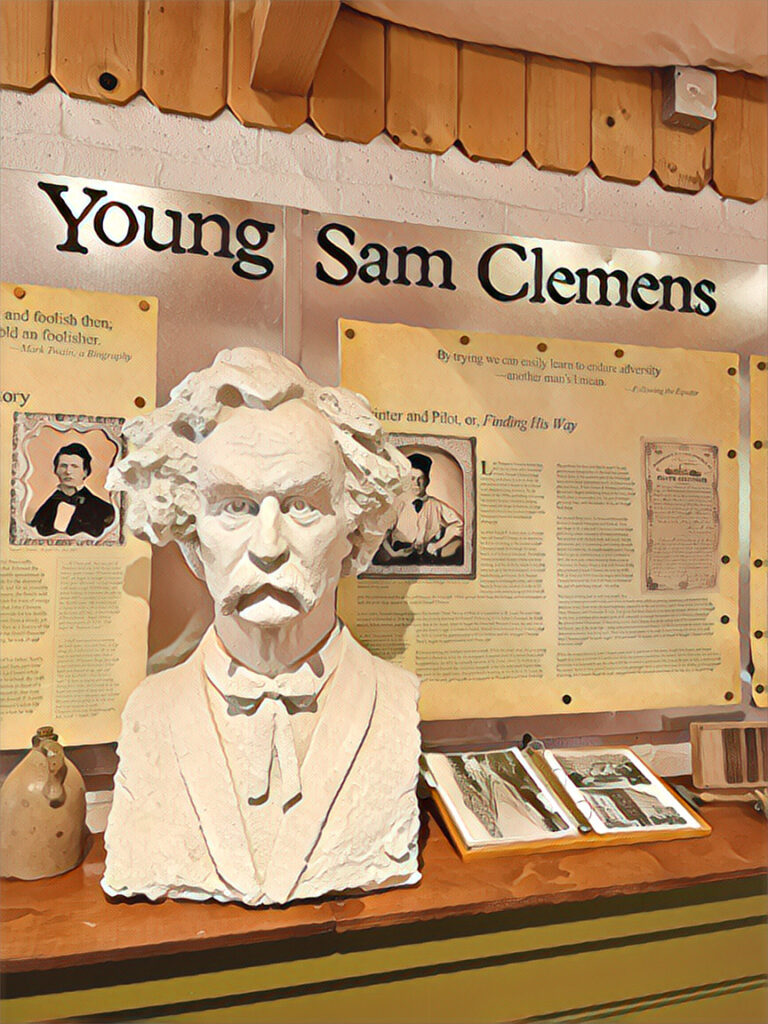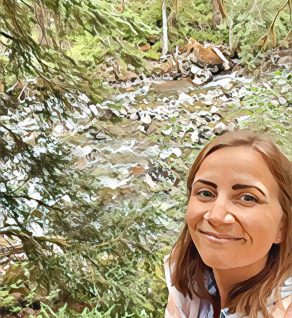This post contains affiliate links
When we think of the great writers of the West, we often land on Jack London and John Steinbeck but Samuel Clemens became Mark Twain while he was west of the Mississippi. Mark Twain’s time in the West was brief but incredibly formative for the fortune-hungry reporter turned literature writer and satirist. The Mark Twain West Coast literary trail will take you from the hills of Virginia City, NV to the small mining town of Angels Camp, CA to the streets of San Francisco.
THE COMPLETE MARK TWAIN WEST COAST LITERARY TRAIL

Virginia City, NV
Our Mark Twain West Coast literary trail begins in this old west town that sits in the hills between Reno and Carson City to the northeast of Lake Tahoe–blink once and you might miss it. These days it caters to tourists with caricature artists, old-timey photo salons, staged shootouts, and kitschy souvenir stores all nested within historic buildings.
On any given weekend there could be a motorcycle group taking over the small strip of Main Street. The watering holes all hang colored oil-lamp type chandeliers from their ceilings. One claims to be the place where Samuel Clemmons officially adopted the pen name Mark Twain.
For it was in Virginia City that Twain worked as a reporter for the town’s newspaper the Territorial Enterprise. His brother, Orion, had previously headed west as he was appointed secretary to the secretarial governor of Nevada. It was 1861 and Twain was 25. Everyone wanted to strike it rich in the mines. The Comstock Lode had been discovered in 1859 and there was a war brewing in the Eastern states so Twain (still Samuel Clemens at the time) followed his brother out West and started newspaper reporting in 1862.
It was when that vast fortune didn’t pan out that Twain needed money and took a job reporting on the bustling mining-town and adopted his pen name–a term from his days piloting river boats on the Mississippi River.
While visiting Virginia City, look for the historic markers noting Twain’s time there as a reporter in front of the old offices of the Territorial Enterprise. Legend has it that he hung out most at the Gold Hill Saloon (started as the Riesen House in 1859) which is located at 1540 Main Street. Beware! The Gold Hill Saloon is purportedly haunted by former residents and guests William and Rosie who like to rearrange items and frequent the halls.
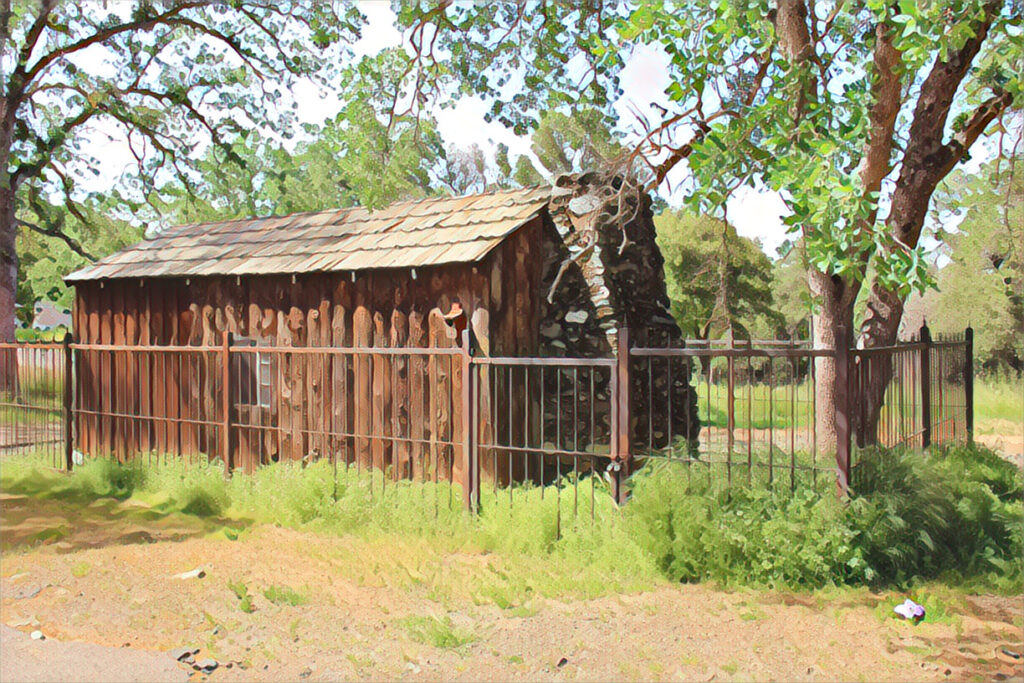
Mark Twain’s Cabin
20788 Jackass Hill Road, Sonora, CA
Heading south from Angels Camp, a scenic eight mile drive will take you to a tight left turn onto Jackass Hill Road and up into a sprawling residential neighborhood (just before this turn there is a historical marker on the right hand side notifying you that the cabin is roughly a mile up the hill). This narrow, bumpy road will lead you to a circular driveway surrounding a modest fenced-in cabin and two historical markers, or, Mark Twain’s cabin.
Twain arrived here on December 4, 1864 at the age of 30 with local miner Steve Gillis and stayed with his brothers Jim and Bill. The descendants of Steve Gillis still live in the area. The cabin is a restored version of a recreation built in 1922. The original “Mark Twain Cabin” was built here in 1922 to commemorate his time here from December 1864-February 1865. Where he actually lived was not at this exact location but nearby. From 2002-2005 the local rotary club restored the 1922 (of which the fireplace and chimney are original) cabin to what it is presently.
When we arrived, we were the only people there. There was just one other car to arrive before we left. There are, of course, no bathrooms here and you’ll just park wherever there is space along the driveway that wraps around. You’ll need a max 15 minutes here unless you’re really trying to summon Mark Twain.
TIP: If you’re headed back north toward Angel’s Camp and have packed a picnic lunch, there is a lovely visitor’s center at New Malones Lake. It offers clean restrooms and a couple picnic tables with beautiful overviews of the lake below and the relics of mines that have stripped away the mountains surrounding the space. The visitor’s center has a few small exhibits that include information on gold mining. They also offer a generous amount of freebies (coloring sheets, activity books) for children. It’s free to visit.
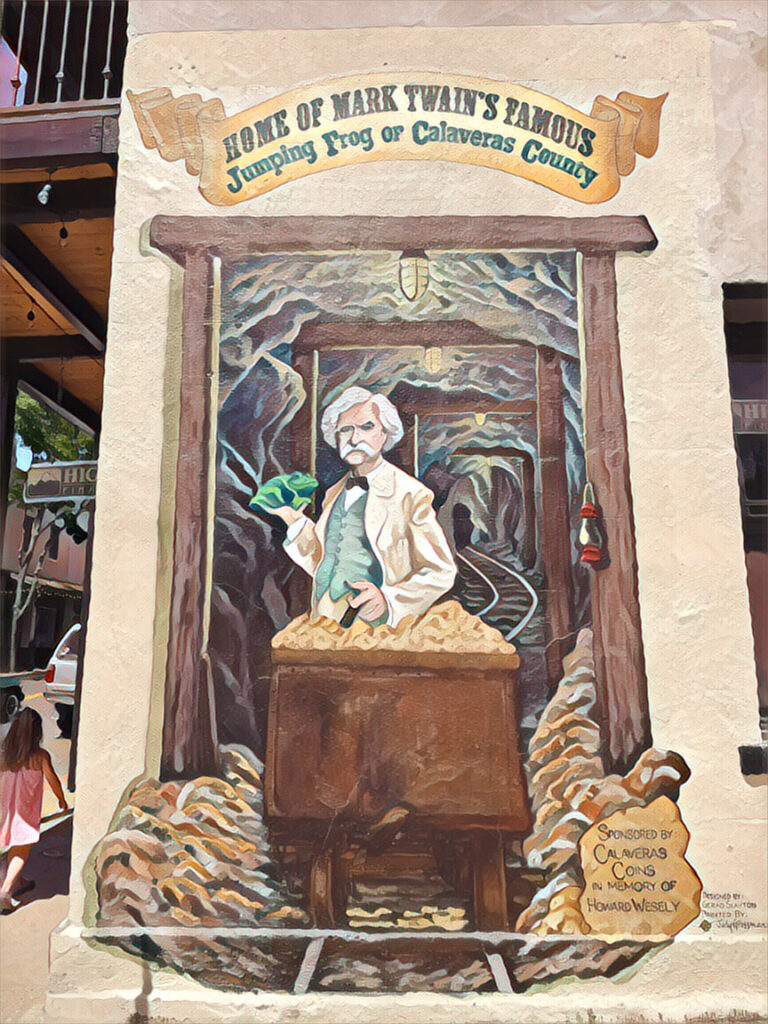
Angels Camp, CA
Angels Camp is an old mining town that provided the inspiration for a short story Mark Twain would write in 1865, bringing him his first real success and national attention as a writer. The whole town is a California Historic Landmark.
It was at the former Angels Hotel that Twain heard a story that would lead him to write “The Celebrated Jumping Frog of Calaveras County.” While the hotel is now defunct (it has since served as offices and apartments) there is a commemorative plaque on its facade noting this moment in history. Around the corner on the south side of the building there is a large mural of Twain holding a frog and surrounded by gold at the entrance of a mine.
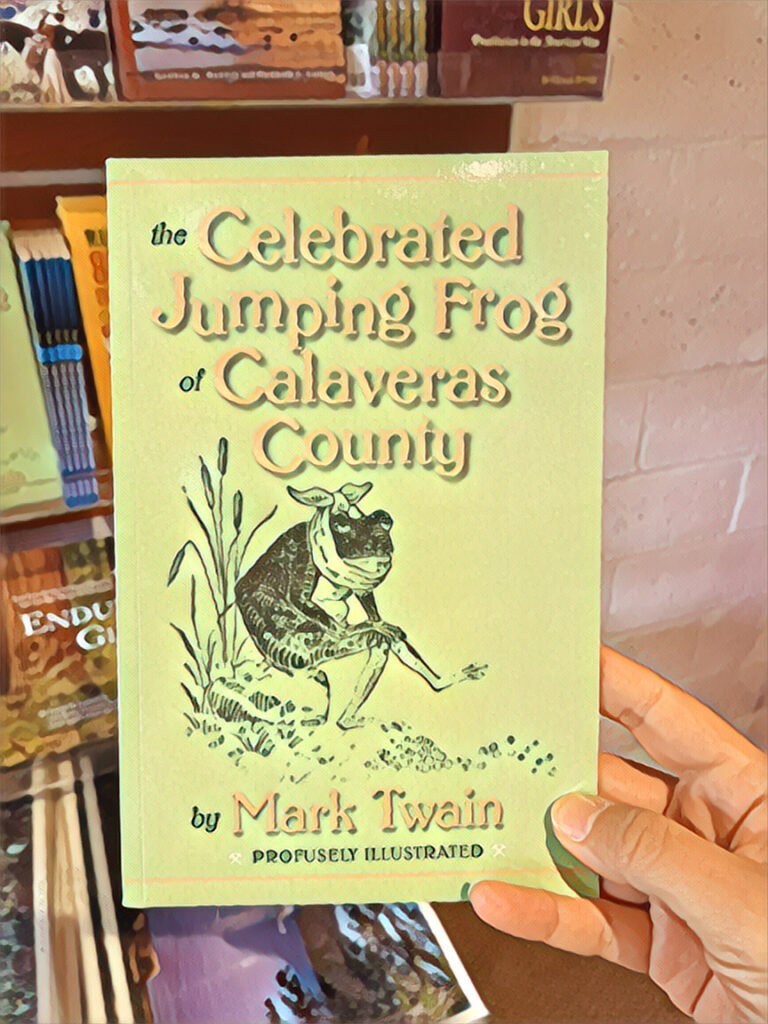
The town has clung on to the frog story and its Twain connection for dear life–especially after all of the mines ceased operation. It’s hosted a frog jumping jubilee for the last 130 years giving it the nickname “Frogtown” and a reason to display frog paraphernalia front, left, and center. Look for the brass imprints lining the sidewalks of Main Street that declare past winners of the jumping jubilee, adorable painted statues, and a historic marker on the south side of town.
On the north end of town, the Calaveras Visitor Center offers an exhibit on Twain, the Gold Rush, and all kinds of frog-jumping lore alongside souvenirs and locally made items such as olive oil, honey, and coffee. They even stock Twain’s famed short story “The Jumping Frogs of Calaveras County.” If time allows, the adjacent Angels Camp Museum (paid admission) boasts one of the largest collections of carriages and wagons in the country and offers more in-depth exhibits on Gold Rush history.
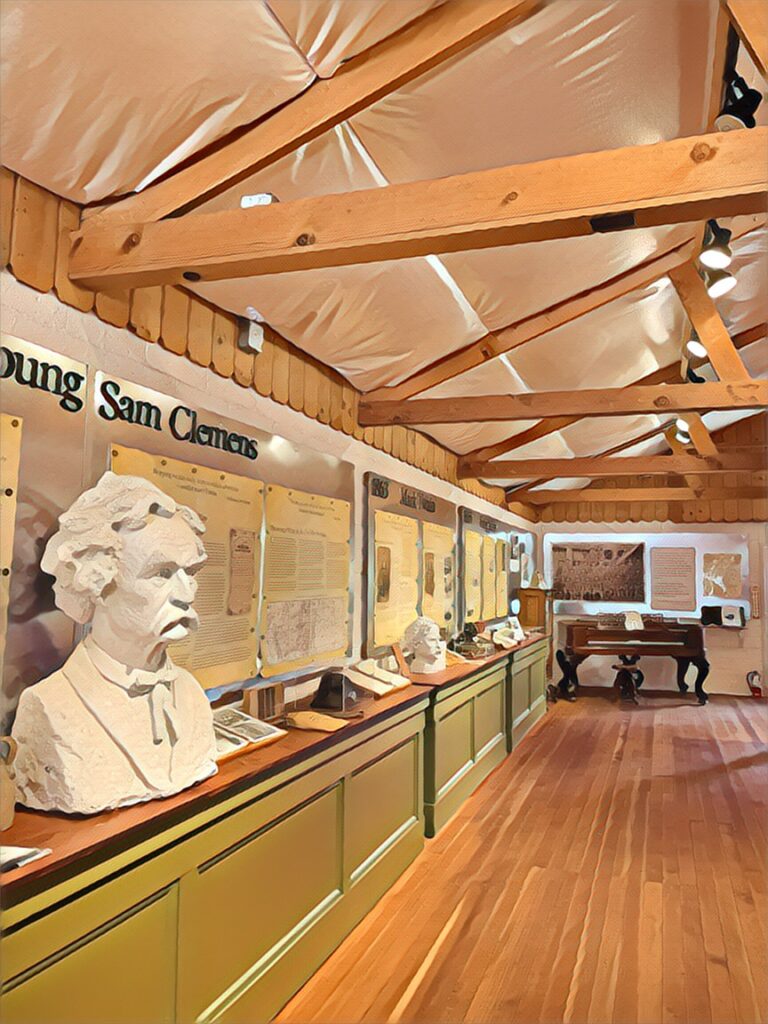
More: While we didn’t stay too long in Angels Camp, I enjoyed my coffee and pastry from Lemon Tree and picked up a cute coffee mug at the shop, Crafty Chicks and Co. Next time, I’d love to see a movie at the vintage art deco Angels Theater and grab a sandwich from the Pickled Porch Cafe.
If you’re headed further east on Highway 4 to Murphys, pause at the Murphys Historic Hotel. Open since 1856, Mark Twain graced their guest list at some point during his jaunt out west as did other notables such as Ulysses S. Grant, John Jacob Astor, and J.P. Morgan.
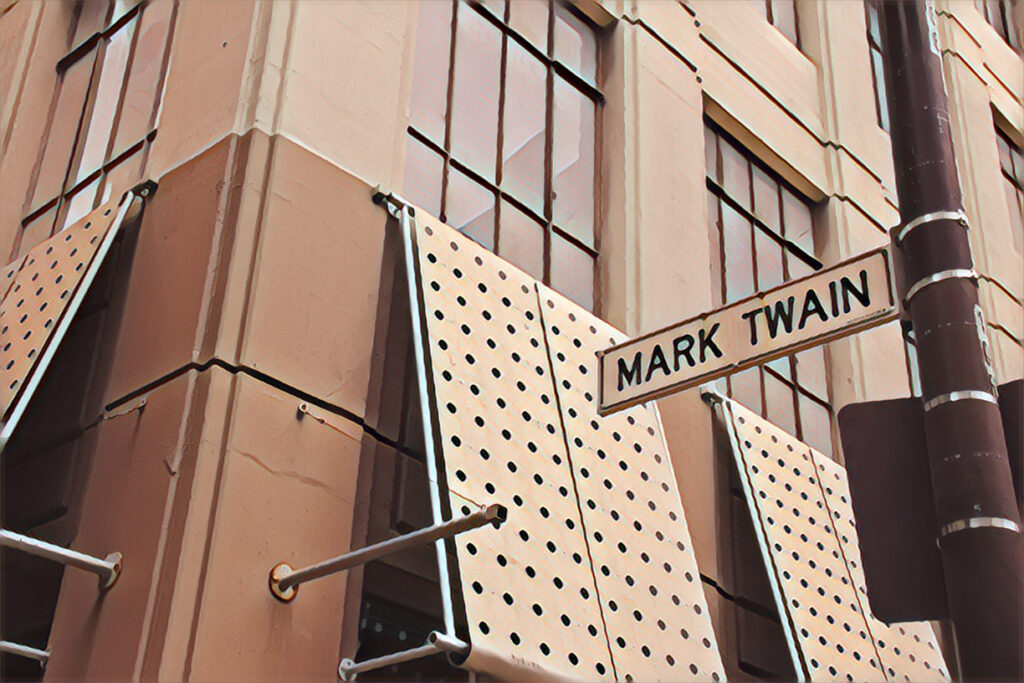
Mark Twain Street
San Francisco, CA
This would not be a Mark Twain West Coast literary trail if I didn’t mention his time spent in San Francisco. However, it’s curious that there is not more in San Francisco that pays homage to Mark Twain since he spent time living on and off in the city for three years, working as a journalist and developing his public identity as a satirist. San Francisco was where he gave his first public lecture as a humorist in October of 1866 after visiting the Sandwich Islands (present day Hawaii) to report for the Sacramento Union. Perhaps the lack of Twain landmarks spattered around the city is because his local haunts are no longer.
When Twain arrived in the city by the bay he stayed at a luxury hotel called The Lick House. It was destroyed by the 1906 earthquake and its former location is now home to the Hunter-Dulin office building located at 111 Sutter Street. He worked as a writer for a newspaper called The Morning Call between 1863-1864 that was located at 617 Commercial Street. It was adjacent to the first U.S. Mint branch in San Francisco. Walk by the building today and you’ll see a historic plaque referencing the Mint but no mention of Twain.
Though you will find a Mark Twain Street at the Transamerica Pyramid. It points in the direction of a long gone behemoth that was incredibly formative for Twain as well as many other writers, artists, and bohemians. Here, where one of the city’s most iconic skyscrapers now resides, is the former home of Montgomery Block, where Twain met and befriended the real Tom Sawyer.
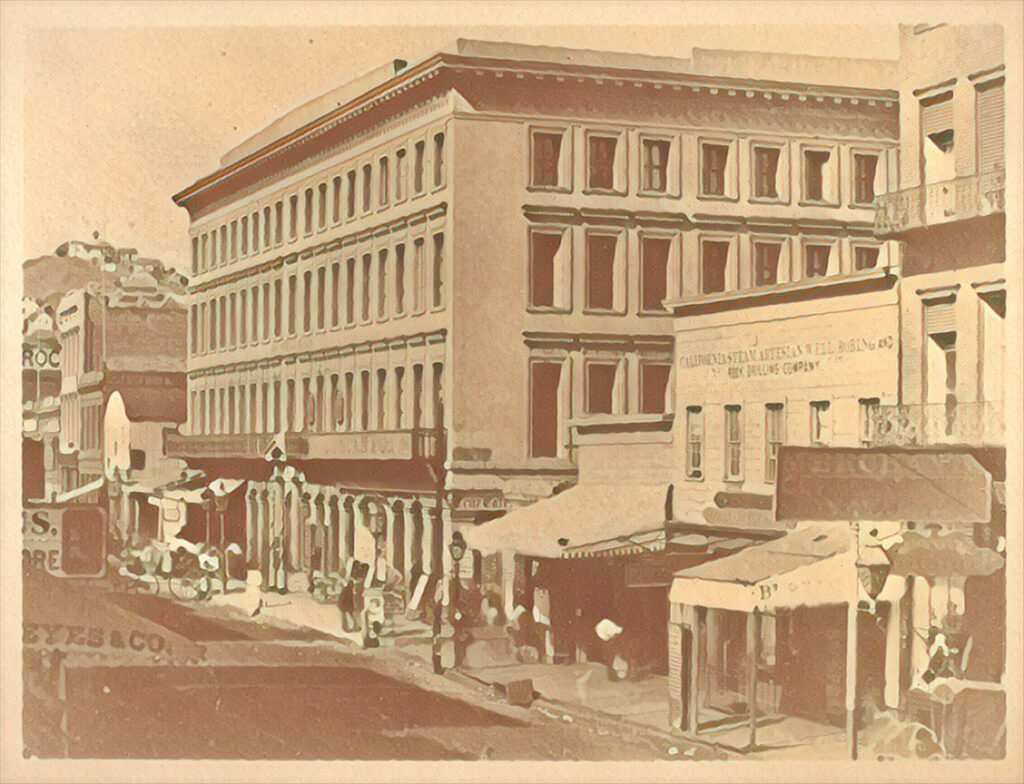
When it was built in 1853, the Montgomery Block Building sat at four stories high and was the tallest structure on the west side of the Mississippi River. Overtime, it became a bohemian enclave and housed offices for Ambrose Bierce, Jack London, Maynard Dixon, Frank Norris, Lotta Crabtree, and later Diego Rivera and Frieda Kahlo. The WPA artists who painted the interiors of Coit Tower had studios there. Because it was built on what was essentially a raft of redwood logs, it was fireproof and earthquake proof. It survived the 1906 earthquake.
Twain met the rough and tumble Tom Sawyer at The Bank Exchange (where Pisco Punch was invented), a saloon in the basement of Montgomery Block and the two quickly became friends. Sawyer was a volunteer firefighter like Twain and the pair bonded over fighting fires and their experiences working on steamships.
They’d often spend time playing poker at Ed Stahle’s Montgomery Street steam rooms and Sawyer would once visit Twain in Virginia City on a short visit where he lost $800 in a gambling spree. Twain sent him back to San Francisco noting that he thought his Virginia City friends might be too speedy for him. They were friends until Twain left San Francisco for good.
The fictional characters that began swirling in Twain’s mind while he was in San Francisco didn’t stop with Tom Sawyer. Mark Twain historians believe that the trickster con artists, The King and The Duke, in his novel Huckleberry Finn are based off of the famed eccentric resident Emperor Norton who proclaimed himself “Emperor of the United States and Protector of Mexico.”
FURTHER READING: Roughing It by Mark Twain chronicles his years in the Wild West fro 1861-1867. For more of Twain’s travel adventures try The Innocents Abroad and Following the Equator: A Journey Around the World. Curious about Twain’s time in Hawaii? Mark Twain’s Hawaii: A Humorous Romp Through History takes Twain’s writings on his experience there and adds social commentary and history about traveling the in 19th century. Or if you’re ready to read a full biography on Twain try Mark Twain: A Life by Ron Powers.
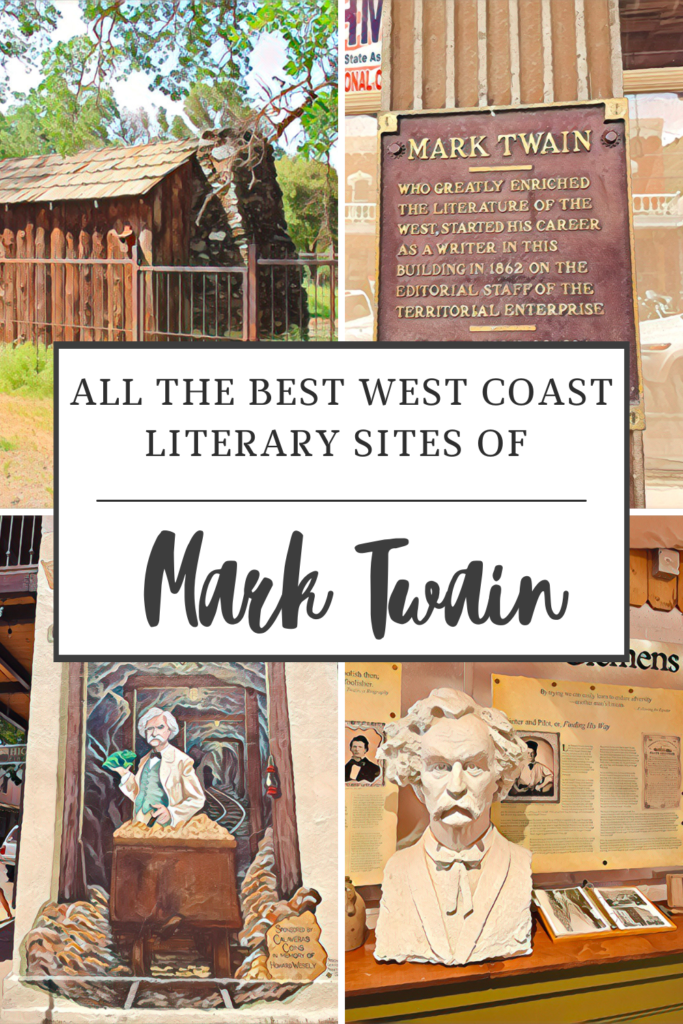
Mark Twain left San Francisco in 1866 to head back East and thus we end our Mark Twain West Coast literary trail. Think I missed something? Let me know in the comments.
